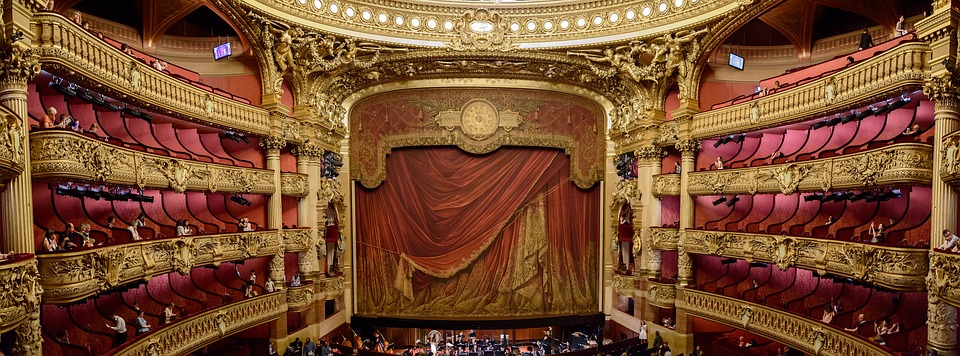From Stage to Screen: The Enduring Popularity of Theatre Adaptations
Introduction:
Theatre has captivated audiences for centuries with its unique ability to transport spectators into different worlds and evoke various emotions. However, with the advent of cinema, the landscape of storytelling underwent a significant transformation. While theatre and film are distinct art forms, they often intersect, particularly when it comes to adaptations. Over the years, theatre adaptations have achieved enduring popularity, finding immense success both on stage and on the silver screen. In this article, we will explore the reasons behind this enduring appeal, delving into the challenges and opportunities of bringing stage productions to a wider cinematic audience.
Historical Roots and Early Examples:
The relationship between theatre and cinema dates back to the early days of film history. When moving pictures first emerged, many filmmakers sought inspiration from theatre plays, recognizing their established narratives and complex characters. This trend began with silent films, such as the 1903 adaptation of William Shakespeare’s “The Tempest” or the iconic 1925 film “The Phantom of the Opera,” adapted from Gaston Leroux’s famous novel and stage play. These early examples demonstrate the allure of adapting theatre productions by capitalizing on their pre-existing popularity and storylines that could be translated visually onto the screen.
Broadway to Hollywood:
The marriage between Broadway and Hollywood grew significantly in the mid-20th century. Several factors contributed to this blossoming relationship, including advances in technology, the recognition of stage actors’ talent and marketability, and the desire to bring beloved stage stories to a wider audience.
One of the most notable and successful theatre-to-film adaptations during this era was “My Fair Lady” (1964), based on the hit Broadway musical. Starring Audrey Hepburn and Rex Harrison, the film garnered critical acclaim and numerous awards. Its transition to the big screen brought a visual grandeur that showcased the opulence of the setting, opening up the previously confined world of the stage production. This successful adaptation paved the way for many more musicals to follow, including “West Side Story” (1961), “Chicago” (2002), and “Les Misérables” (2012), among others.
Factors Contributing to the Popularity of Theatre Adaptations:
1. Storytelling Preservation: Theatre adaptations allow timeless stories to transcend temporal and geographical barriers. By capturing a stage production on film, these narratives can reach a broader audience. The permanence of film ensures that future generations can continue to engage with these stories, preserving their richness for years to come.
2. Exposure and Accessibility: While theatre can be restricted by location, ticket availability, and production costs, film adaptations provide a more accessible experience. Movies can be viewed in cinemas worldwide or through various digital platforms, making theatre stories more readily available to a global audience.
3. Amplifying the Visual Experience: Transitioning theatre productions to the big screen offers the chance to expand on the visual elements of the story. Film brings the use of cinematography, editing techniques, special effects, and detailed production design, enhancing the audience’s immersion in the world created by the original stage production.
4. Showcasing Interpretations: Adapting a play to film often involves reimagining the source material, allowing directors, actors, and creative teams to bring new interpretations to life. This process can introduce novel perspectives, visual styles, and narrative approach, enticing both existing fans and newcomers to engage with the adaptation on a different level.
Challenges in Adapting Theatre to Film:
While theatre and film share commonalities, adapting the former to the latter poses unique challenges. Some of the primary obstacles include:
1. Scale and Visual Limitations: Theatre often relies on the audience’s imagination to fill in the gaps. The transition to film requires a reimagining of sets, costumes, and staging to better suit the medium. While this can enhance the visual spectacle, it requires careful consideration to strike a balance between maintaining the essence of the stage production while embracing the expanded possibilities of cinema.
2. Capturing Live Performances: Theatre thrives on the interaction between actors and their live audiences. Adapting a theatre production to film risks losing the direct connection between performers and viewers. Filmmakers must strive to capture the energy, intensity, and raw emotions that arise from live performances, without compromising the cinematic experience.
3. Saturation and Audience Expectations: With the abundance of adaptations in recent years, filmmakers must find ways to make their adaptations stand out. Balancing the expectations of theatre enthusiasts, who often scrutinize fidelity to the source material, with the desire to bring something fresh and compelling to the screen can be a delicate task.
Conclusion:
The enduring popularity of theatre adaptations, both on stage and in cinema, speaks to the timeless appeal of these stories. By bridging the gap between the live energy of theatre and the permanence of film, adaptations have succeeded in preserving, amplifying, and reimagining these stories for a broader audience. As theatre continues to captivate viewers, we can expect the tradition of bringing stage productions to the screen to persist, continuing to enchant and inspire audiences for generations to come.

